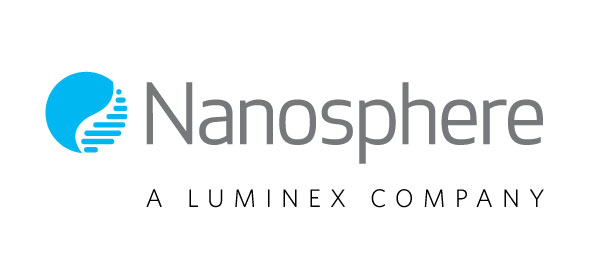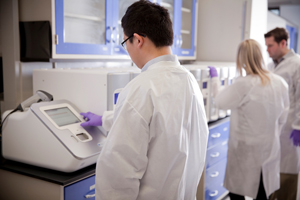This webinar will discuss how rapid molecular stool pathogen diagnostic testing may minimize the burden of diarrheal illness throughout the entire hospital and to healthcare providers worldwide.
Diarrhea caused by bacterial, viral, and/or parasitic infection represents a significant worldwide healthcare burden. Each year, there are two billion instances of diarrheal disease globally, resulting in nearly two million deaths.[1] The World Health Organization estimates that diarrhea is the cause of or is a major contributor to approximately one-quarter of all post-neonatal childhood deaths.[2] In the United States, an estimated 1.4 episodes of acute diarrhea occur per person each year.[3] Though most cases of diarrheal disease are generally self-resolving and not life-threatening in immunocompetent individuals, certain bacterial and viral infections can result in serious clinical morbidity and even death.
The current diagnostic challenge associated with detection of community-acquired diarrhea is twofold. Since clinical presentation of diarrheal disease does not narrow down the potentially responsible pathogen(s), physicians often end up taking the “shotgun” approach to diagnostic testing by ordering testing for a majority of stool pathogens. If physicians are able to characterize the patient’s history, it could greatly narrow the number of diagnostic tests necessary for a given patient. On the diagnostic end, stool culture and ova and parasite (O&P) remain the gold standard diagnostics. Though generally considered sensitive and specific, these procedures are labor-intensive, unpleasant for technicians, can take as long as 5-7 days to produce definitive results in the case of stool cultures, and require a high degree of technical skill in the case of performing O&Ps. Together, the excessive ordering of stool pathogen testing by physicians paired with less-than-ideal diagnostic options has led to what some consider significant inefficiencies in the clinical laboratory. As a result, medical technologists can spend unnecessary time working up negative stools, which can account for upwards of 95% of stools samples submitted for testing. Confirmation of a negative stool sample takes as few as 1-2 hours with a rapid diagnostic test, allowing laboratories to reallocate medical technologist time to other priorities.
Rapid diagnostics for stool pathogens have only recently emerged as viable options for testing for community-acquired diarrhea; infections caused by environmental enteric bacteria, viruses, or parasites. Since treatment decisions can vary depending on the identity of the infectious agent and the overall health of the patient, rapid identification of pathogenic bacteria, viruses, and parasites from a stool specimen is crucial.
From a therapeutic and public health standpoint, rapid testing for stool pathogens can:
- Improve patient management decisions and minimize the use of inappropriate or unnecessary antimicrobials. This is especially important when it comes to detection of STEC, where continued antimicrobial exposure may increase the risk of a patient developing HUS [4]
- Trigger outbreak investigations earlier for such pathogens as Salmonella and Vibrio
- Allow for the proper infection control measures to be taken within a hospital or outside of a hospital at such places as long-term care or daycare facilities to minimize the spread of infection
- Mitigate further downstream testing, such as colonoscopies, when the origin of diarrheal infection is yet to be determined due to the slow turnaround time of conventional diagnostic methods
Antibody-mediated EIA methods have shown the ability to shorten turnaround times for such stool pathogens as shiga-toxin producing E. coli (STEC), however, these kits lack the multiplexing capabilities necessary to replace culture for routine screening and may still require 12-24 hour turnaround times. Multiplex molecular methods are very well suited as the diagnostic platform for stool pathogens as these tests can target a majority of stool pathogens at one time. The sample-to-results automation and rapid turnaround times of these tests will result in improved workflow efficiencies in the clinical laboratory. The improved sensitivity of molecular-based tests over culture will also provide the accurate results necessary for earlier optimization of patient management, better infection control, and quicker public health response to potential outbreaks.
Speakers

David Peaper, MD, PhD, Assistant Professor of Laboratory Medicine, Yale School of Medicine; Director of Clinical Microbiology Laboratory, Yale-New Haven Hospital; and Director of Virology Reference Laboratory, VA Connecticut Healthcare System
David Peaper received his BA degree from DePauw University where he graduated Magna Cum Laude. He then moved to Yale for his MD and PhD degrees, graduating in 2007 and 2008, respectively. His dissertation research examined the biochemisty of MHC class I antigen processing and presentation. After graduating medical school, he entered in the Clinical Pathology training program at Yale New Haven Hospital and the Department of Laboratory Medicine at the Yale School of Medicine. He served as chief resident before completing a fellowship in medical microbiology, also at Yale. Dr. Peaper is now Assistant Professor of Laboratory Medicine at the Yale School of Medicine where he serves as the Director of Medical Microbiology for Yale New Haven Hospital. He is board certified in Clinical Pathology and a Fellow of the College of American Pathologists. His research interest lie in the development and application of new technologies to improve laboratory operations and efficiency.

Marilyn Mitchell, MT(ASCP)MS, Microbiology Supervisor, Community Regional Medical Center, Fresno, California
As a Clinical Laboratory Scientist, Marilyn has had the opportunity to spend her early career in Chemistry and Hematology and the last 20 years specializing in Microbiology and Molecular Biology. In 2000, she completed a Master’s Degree in Molecular Biology from California State University – Fresno. Over the last 10 years, Marilyn have been published in Journal of Clinical Microbiology 2 times. Since 2012, she has been the Hematology instructor at California State University – Fresno to help prospective Clinical Laboratory Scientists get a solid background in a needed requirement. Currently, Marilyn is Microbiology Supervisor at Community Regional Medical Center in Fresno, California, where her focus is providing physicians with correct results as quickly as possible to improve patient care.
Who Should Attend?
- Clinical/Reference Laboratory (PhD Microbiologist, Microbiology Supervisor, Clinical Laboratory Director, Medical Technologists, Outreach Coordinators )
- Infectious Disease Physicians
- Clinical Pharmacy (Antimicrobial Stewardship Team, ID Pharmacist)
- Physicians (Private Physicians, Hospitalists, Critical Care)
Xtalks Partner
Nanosphere
Nanosphere is dedicated to enhancing medicine by providing targeted molecular diagnostic tests that can lead to earlier disease detection, optimal patient treatment and improved healthcare economics. Our platform, the Verigene® System, enables clinicians to rapidly identify the bacteria and viruses responsible for some of the most complex, costly and deadly infectious diseases. Currently, the Verigene test menu targets infections of the bloodstream, respiratory tract and gastrointestinal tract.
Media Partner
You Must Login To Register for this Free Webinar
Already have an account? LOGIN HERE. If you don’t have an account you need to create a free account.
Create Account


